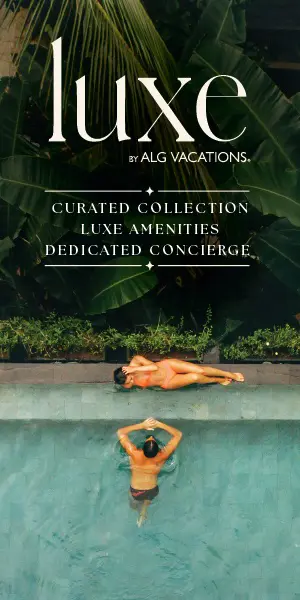On Board Harmony Of The Seas, Part 2
by Cheryl Rosen
This is the second part of our coverage of the launch of the world’s biggest ship. We know you read part one already, but here it is again if you want to check it out.
Harmony of the Seas is an engineering marvel that starts with a core of 500,000 unique pieces of steel, and miles and miles of cable. Wonderland alone has more than 3,000 light fixtures.
Like a huge Erector set, its assembly required putting the right thing in the right place in the right order—and that required “a really, really detailed plan,” says the Harmony’s project director, Petteri Keso. And because everything is at sea, exposed to water and air, what you expect to happen does not always happen.
“We did rounds and rounds of tests to see how different designs would cause the wind to shift on the pool deck and in Central Park and on the Boardwalk,” Keso said. And finally, after three and a half years on this project, “we stand on the promenade and look at the faces of the first guests—and hope they are smiling.”

Central Park.
But it’s not really about the engineering feat below our feet. Guests are more likely to be smiling over the food and the entertainment—and Harmony has plenty of both.
There’s a brand-new menu for Royal Caribbean, “more modern, more locally sourced, more reflective of what you’d see in a five-star restaurant on land,” says traveling corporate chef David Reihana. It will begin on the Harmony and then roll out across the fleet, bringing authentic ingredients and tastes to match each ship and each itinerary. For Quantum of the Seas, for example, which is aimed at an Asian audience, the menu will include wonton soup. Here in Southampton, there are tomatoes from Kent and beef from Hereford.

David Reihana, traveling corporate chef (L), and Travis Kamiyama, founder of Izumi (R).
“Our being here is really important for the local economy,” Reihana said.
Robots behind the bar, Grease on stage
The Bionic Bar—the fleet’s fourth—is a show in itself. With 130 bottles of liquor, and 16 sodas and juices, the twin robot bartenders pour 120 drinks a day, in an average of 45 to 60 seconds each. Live bartenders are faster sometimes, but not always; human beings can pour four of the same drink at once, where the robots make orders one by one.
Still, it’s hardly about the speed when you have nowhere to go, and the wait is usually less than 10 minutes. “People are amazed by it, by the experience,” says project manager Alessandro Incisa of MakrShakr in Torino, Italy, which produced the robots under an exclusive seaside contract with Royal Caribbean. The company also is developing a land-based version for city bars that will launch in about two months, he said, and already has one in a container that can be delivered to special events.
And then there are the productions. The production team dubbed its project “24/7”—putting together an astounding 24 productions in seven weeks on the two ships launching in April and May, Harmony and Ovation. It auditioned 26,000 would-be actors and singers, skaters and musicians, in 66 cities around the world.
In the end, though, it’s the shows like Grease, making its cruise-ship debut on the Harmony, that work best. “We’ve found that the four-beats-on-the-floor Rock-and-Roll shows are the ones that really work, that get people to forgo the casino,” said VP of entertainment Nick Weir.
With 1,200 performers employed every year, he said, “we’re probably the biggest entertainment company in the world in terms of employees. We run six aqua shows and 14 ice shows; we employ a good chunk of the world’s ice skaters.”
But when he watches Grease on Harmony, “I still wake up and think ‘God, what a ship. God, what a show!’ ”
With its two young leads—including a Sandy who has never set foot on a ship before—signed to seven-month contracts, Weir believes he has made a good choice. Asked if he thinks Royal Caribbean’s entertainment really is better than that of its competitors, he sniffed, “I don’t compete with the other cruise lines. I compete with Broadway, with the West End, with Las Vegas. I’m after them.”
To get the rights to the show—whose unique 90-minute format combines elements of the movie and the stage show, and therefore required deals with both—Royal Caribbean has agreed to produce Grease on two ships, Harmony and Independence.
So tomorrow the team flies to Miami and starts rehearsals all over again, this time for Independence, whose stage is 10 feet shorter.





















